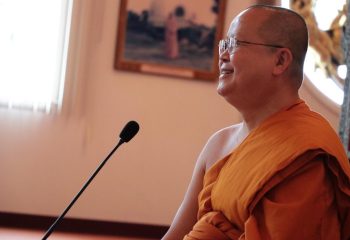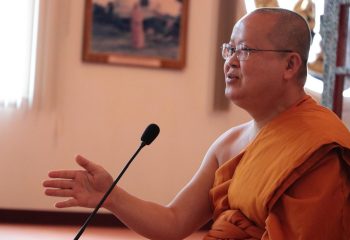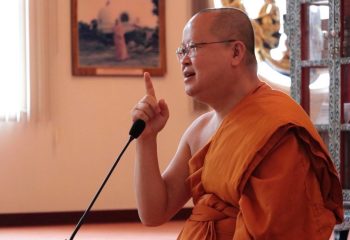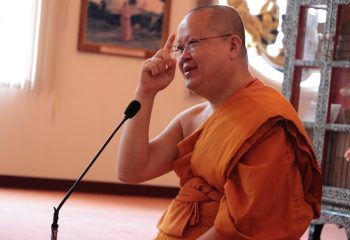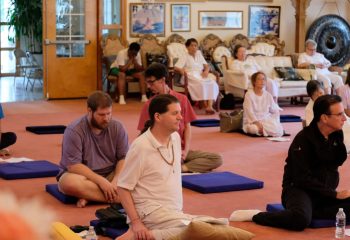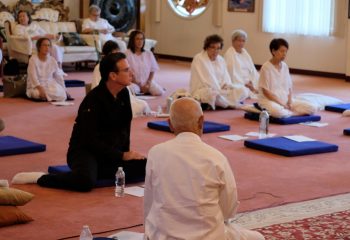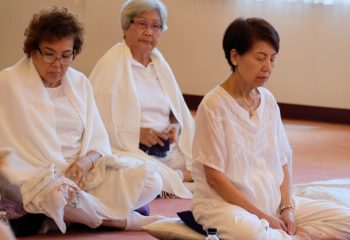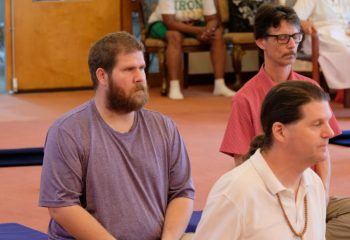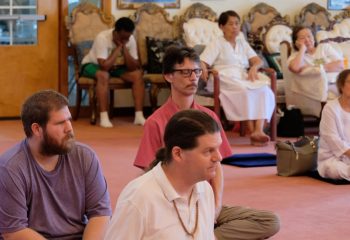Introduction to Basic Vipassana Meditation by Dr.Handy Inthisan
At Wat Thai, D.C. on Fri.31, Aug.2018
Insight meditation is practiced:
- To develop mindfulness at all times
- To know the true nature of all mental and physical states in the light of the three characteristics of impermanence, suffering or dissatisfaction, and no-self
- To know and give up defilements of the mind—until the end of suffering becomes real
What is insight meditation? Insight meditation (or vipassāna) means to see reality as it is, not as we would like it to be. It means to observe with a detached awareness (mindfulness) all mental and physical phenomena as they arise in consciousness—in the present moment, moment to moment, thus freeing the mind from unwholesome states of craving, aversion, and delusion, which are the causes of suffering in our lives.
Insight meditation started in Asia and is based upon the teachings of the Buddha. The first of these teachings is the Four Noble Truths:
- The Noble Truth of Suffering—dukkha (the unsatisfactoriness of all existence)
- The Noble Truth of the Arising of Suffering (all suffering is produced by craving, tanhā)
- The Noble Truth of the End of Suffering (the extinction, nirodha, of craving results in the extinction of suffering)
- The Noble Truth of the Path Leading to the End of Suffering (the Noble Eightfold Path of right view, right intention, right speech, right action, right livelihood, right effort, right mindfulness, and right concentration)
The Noble Eightfold Path is laid out in the “Satipatthāna Sutta,” or “The Foundations of Mindfulness.” Insight meditation is also called the way of mindfulness.
What are the four foundations or objects of mindfulness? They are the body, feeling (sensation), mind, and mental objects. To practice insight meditation, we focus complete attention (mindfulness) on one of these four objects as it arises in our consciousness in the present moment.
The four foundations of mindfulness can be reduced to two categories, namely, nāma (mind) and rūpa (matter). So the purpose of meditation is to observe the arising and falling of mind and matter in the present moment, moment to moment. If mind and matter are observed very closely, we will discover the three characteristics of existence:
- Anicca or impermanence. Everything is changing.
- Dukkha, or dissatisfaction, suffering mainly due to the fact that nothing lasts.
- Anattā or no-self. Everything is happening according to certain conditions, causes, and effects and is out of our control.
When we slow down during insight meditation practice, we can see for ourselves the three characteristics of anicca, dukkha, and anattā. In this seeing on deeper and deeper levels of practice, we will see more clearly that there is nothing worth clinging to since everything is changing, unsatisfactory, and out of our control. We become more detached and let go of clinging. Thus wisdom arises.


